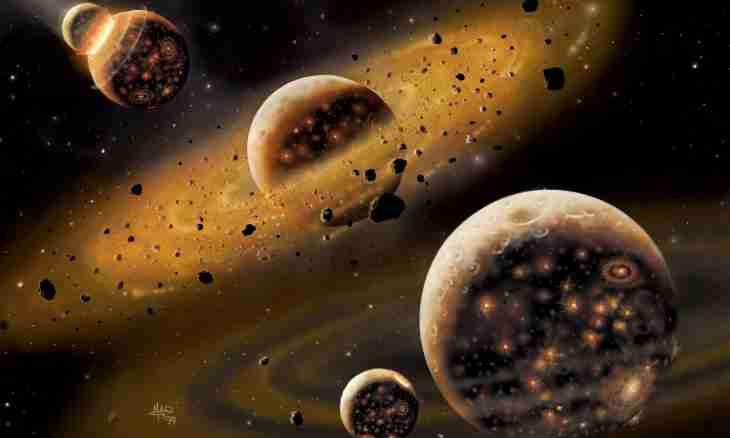It is considered to be that the Solar system in which people of Earth happened to live arose about 4.5-5 billion years ago and as some scientists believe, as much again time can exist. Today the set of theories of education and evolution of stars and planetary systems is known. But the majority them them are only more or less reasonable hypotheses needing confirmation.
Origin of the Solar system
Issues of education and formation of the Solar system concerned already astronomers of the past. But the first rather reasonable hypothesis of formation of the Sun and the planets surrounding it was offered for the first time by the Soviet researcher O.Yu. Schmidt. The astronomer made the assumption that the central star which addressed on a huge orbit around the center of the Galaxy managed to take a cloud of interstellar dust. The dense bodies which subsequently became planets were also created from this cooled-down dust education.
The computer calculations which are carried out by modern researchers show that a lot of primary gas-and-dust cloud education was extremely big. The size of the cloud which arose in space open spaces first much more exceeded the sizes of the present Solar system. Most likely, the composition of substance of which planets were formed was close on structure to that which is characteristic of interstellar fogs. The main part of this substance was made by interstellar gas.
The specified data allow to assume that formation of a system came from the Sun and planets in several stages. The planetary system was created in the same terms in which there was a formation of the star. In the beginning the central part of a cloud which did not have stability contracted, turning into a so-called protostar. The main cloudy weight in the same time continued to make rotation around the center. Gradually gas was condensed, becoming solid substance.
Evolution of the Sun and planets
Process of formation of the Solar system and its subsequent evolution happened gradually and continuously. Large firm particles fell on the central part of a gas-and-dust cloud. The remained "motes" of which the excess moment of rotation was characteristic created rather thin gas-and-dust disk which was more and more condensed, becoming flat. Cold clots of substance faced among themselves, connecting in larger bodies. This process was promoted by gravitational instability. The number of new bodies in future Solar system could be billions. Present planets were created from such dense material objects subsequently. On it many millions of years left. The least massive planets were formed closer to the Sun. And here heavier particles of substance directed to the center of a system. Solar inflows had strong impact on rotation of the planets, closest to a star, – Mercury and Venus –. At a present stage of the evolution the Sun represents the typical star of the main sequence radiating a stable stream of energy which is formed due to the nuclear reactions proceeding in the center of a star. Around the Sun on independent orbits eight planets from which Earth is the third rotate.

